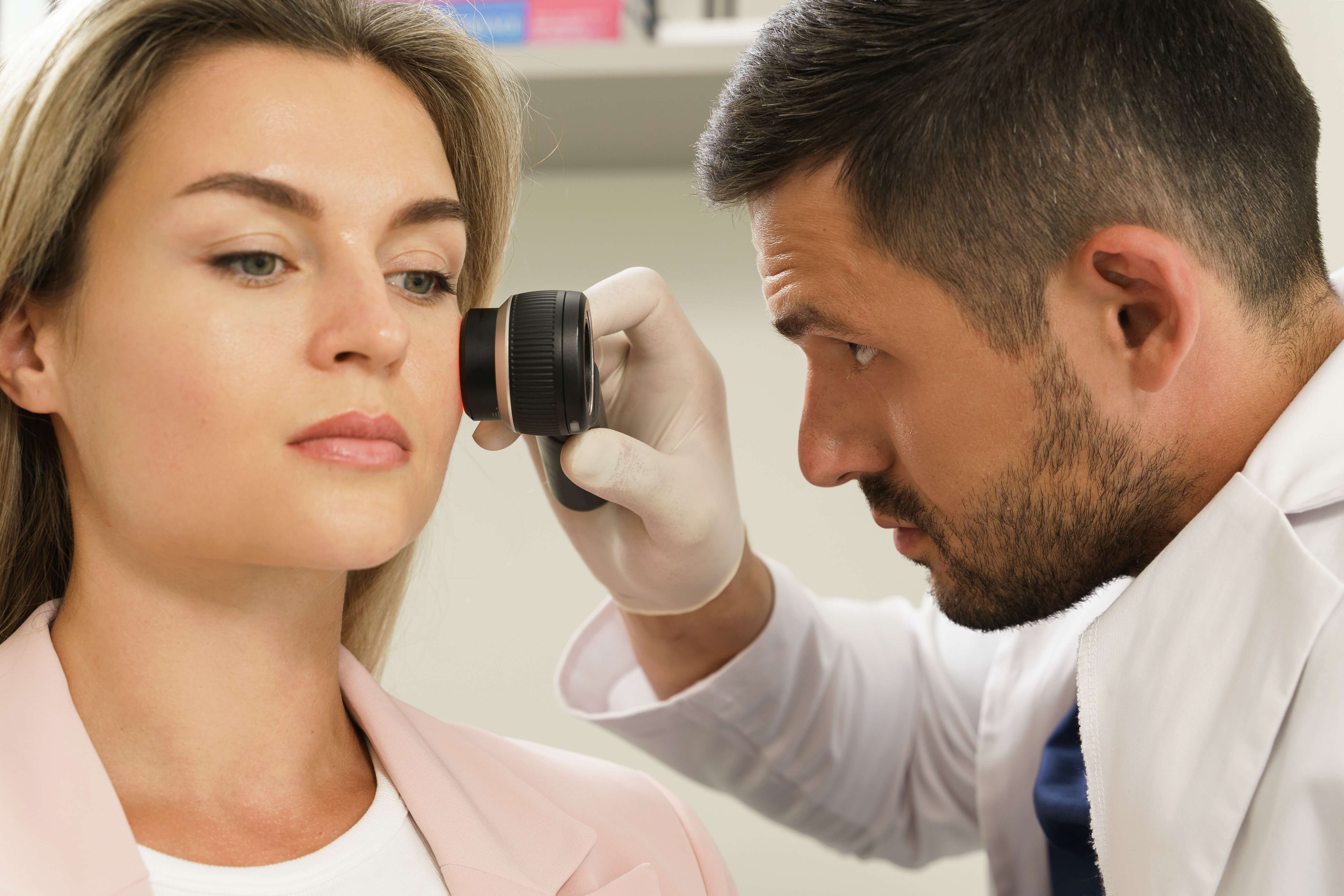Skin cancer is an uncontrolled, unorderly growth of abnormal cells in the epidermis (the outermost skin layer). It is caused by unrepaired DNA damage that triggers mutations (changes in the skin cells). These mutations cause the skin cells to multiply quickly and form malignant tumours.
There have been significant advancements in developing effective skin cancer treatments. Research on genetics, targeted therapy and immunotherapy is aiding the treatment of all cancer types and stages. However, increased awareness and accurate, early diagnosis remain the most important factors in eliminating skin cancer, with close to 100% cure rates at an early stage.
What Causes Cancers of the Skin?
The two main causes of skin cancer are exposure to the sun’s ultraviolet (UV) rays and using UV tanning beds. Fortunately, if skin cancer is caught early, your doctor can treat it with little or no scarring and eliminate the threat of cancer spreading.
What Does Skin Cancer Look Like?
Skin cancers can vary in appearance from one person to another due to skin tone, size and type of skin cancer and location on the body. Commonly, skin cancer appears as:
- A mole that changes in colour, size or feels or that bleeds
- A small lesion with an irregular border and portions that appear red, pink, white, blue or blue-black, or
- A painful lesion that itches or burns
Common Types Of Skin Cancer
Skin cancer is the most common type of cancer. It is important to know which type you have as it will affect your treatment and prognosis.
The main types of skin cancer are:
- Basal cell carcinoma (BCC)
- Squamous cell carcinoma (SCC)
- Melanoma and
- Merkel cell carcinoma (MCC)
Basal Cell Carcinoma (BCC)
BCC is the most common form of skin cancer. BCCs are abnormal, uncontrolled growths that arise from the skin’s basal cells in the epidermis (outermost layer of skin).
These cancers usually develop on areas that are exposed to the sun, especially the face, ears, neck, scalp, shoulders and back. Most BCCs are caused by a combination of numerous, intense sun exposures and long-term exposure to UV radiation from the sun. BCCs can be locally destructive if not detected and treated early. Although these cancers are rarely fatal, they can metastasise (spread) if not detected early.
When detected early, most basal cell carcinomas (BCCs) can be treated and cured. Swift treatment is vital, because as the tumour grows, it becomes more dangerous and might require more extensive treatment, which can be disfiguring. Certain rare and aggressive forms can be fatal if not promptly treated.
If you have been diagnosed with a small or early BCC, there are effective treatments that can usually be performed which leave minimal scarring.
Squamous Cell Carcinoma
SCC is the second most common form of skin cancer. They can sometimes grow rapidly and metastasise if not detected and treated early.
SCC is an uncontrolled growth of abnormal cells arising from the squamous cells in the outmost layer of the epidermis skin. It is usually caused by long-term exposure to UV radiation from the sun and tanning beds. SCCs are common on sun-exposed areas of the ears, face, scalp, neck, and hands. These are the same areas that usually show signs of sun damage, including wrinkles and age spots.
Most squamous cell carcinomas (SCCs) of the skin can be cured when found and treated early. More advanced SCCs of the skin are more difficult to treat and can become dangerous, spreading to local lymph nodes, distant tissues and organs. Treatment will depend on the tumour type, size, location, and depth, as well as your age and overall health. If the cancer has not spread, there are several effective treatments that can be performed on an outpatient basis.
Melanoma
Melanoma is a cancer that develops from melanocytes, the skin cells that produce melanin pigment, which gives skin its colour. It is the most dangerous kind of skin cancer but can be curable when caught and treated early.
Melanomas often resemble moles and or may originate from them. They can appear on any area of the body, including areas not usually exposed to the sun. Melanoma is often caused by the kind of intense, intermittent UV sun exposure that leads to sunburn. Using tanning beds also increases your risk for melanoma.
If you been diagnosed with melanoma, your treatment options will depend on the stage of the disease, the location of the tumour and your overall health. Early diagnosis and treatment will result in the best outcome. For those with advanced melanoma, promising new treatment options are improving quality of life and survival rates.
Merkel Cell Carcinoma
Merkel cell carcinoma (MCC) is a rare, dangerous skin cancer with a high risk of recurring and metastasising throughout the body. MCC is often associated with the Merkel cell polyomavirus and is more common in fair-skinned individuals over age 50.
MCC tumours usually appear as firm, painless lesions or nodules on sun-exposed areas such as the head and neck, and often on the eyelids.
Although Merkel cell carcinoma is rare and aggressive, it is treatable, especially when found at an early stage. Treatment usually includes surgical removal of the primary tumour along with radiation, immunotherapy and chemotherapy. Early detection and treatment are crucial.


 71–75 Shelton Street, Covent Garden, London, WC2H 9JQ
71–75 Shelton Street, Covent Garden, London, WC2H 9JQ +44 (0) 20 3376 1032
+44 (0) 20 3376 1032



